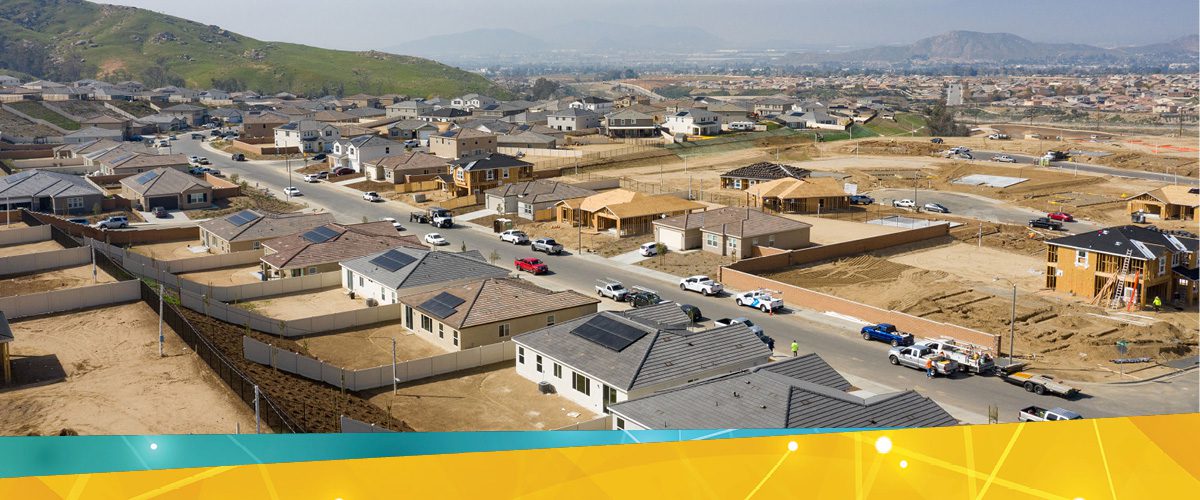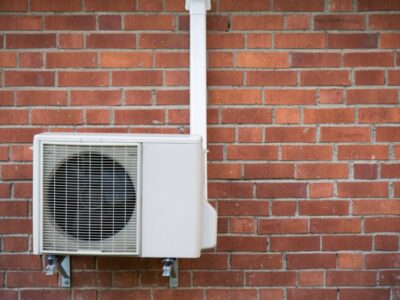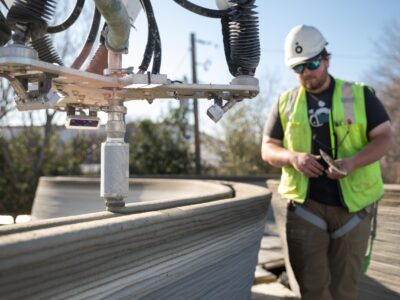(Bloomberg Businessweek) —
A home can be many things—a refuge, an investment, a money pit. So why not a power plant? In 2023 more US homes equipped with solar panels and batteries will start generating surplus electricity they can sell to their local utility. Those renewable energy systems will also keep the lights on and the Wi-Fi humming during blackouts triggered by the more frequent and intense storms, heat waves and wildfires caused by climate change. Heat pumps and other high-efficiency electric appliances, meanwhile, will slash homeowners’ energy bills and carbon footprints.
In a middle-class exurb outside Los Angeles, for instance, every one of 219 new single-family homes being built produces and banks solar electricity. Together they also form two microgrids that can operate independently of California’s stressed power grid. KB Home’s Durango and Oak Shade neighborhoods—in Menifee, California—also share a 2.3-megawatt-hour “community battery” that supplies additional juice to homes during outages.
While residents are at work or asleep, a software program engages in energy arbitrage, selling a home’s excess solar electricity to utility Southern California Edison or storing it in the battery in the garage for use in the evening when power rates rise. To maximize electricity production, a heat pump water heater may be put into economy mode when it’s not needed, and charging an electric car can be delayed. The microgrids operate as virtual power plants, allowing the utility to avoid blackouts by tapping hundreds of batteries when demand spikes, such as when a heat wave hits.
Expect virtual power plants to proliferate as grids continue to buckle under extreme weather. In this model, a home battery will become as essential as a water heater. Also compelling the decarbonization of the suburban homestead: state renewable energy mandates and the rising costs of electricity and gas.
The growth in energy-independent homes will be supercharged by the federal Inflation Reduction Act’s generous subsidies. A tax credit that covers 30% of a rooftop solar system’s cost has been extended to January 2034, and home batteries now qualify for the incentive as well.
The IRA provides $14,000 in rebates per family to replace fossil fuel furnaces and water heaters with heat pumps, install induction stoves and upgrade a home’s electrical system. Households that earn up to 150% of their area’s median income are eligible for the rebates. Homeowners who don’t qualify can still get as much as $3,200 in tax credits for installing heat pumps or induction stoves and making other energy-efficiency improvements. Some states and utilities give their own rebates.
And as long as you’re generating power from your house, why not from your car? This will be the year that the car—a big source of household carbon emissions and a drain on the family budget—also starts to earn its keep by powering the home. Some electric vehicles sold in the US, such as the Ford F-150 Lightning and the Kia EV6, have bidirectional capability, meaning their sizable batteries can supply electricity to a home. In some cases an EV could keep a home powered for days during a blackout. At the microgrid communities in Southern California, a number of homes will be equipped with bidirectional chargers, and their residents will be offered leases on Kia EV6s. The idea is to assess the cars’ potential to power homes and the grid.
“It’s just a natural fit to match up your electric car with your house and be able to use that energy that is stored inside of the car,” says Dan Bridleman, senior vice president for sustainability, technology and strategic sourcing at KB Home.
To contact the author of this story:
Todd Woody in San Francisco at twoody4@bloomberg.net
© 2023 Bloomberg L.P.





